|
MARVEL COMICS'
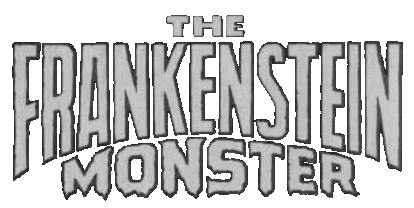
(1973-1975)
Click
here to see a Flash animation featuring panels from The Frankenstein Monster # 1
(366K)
The Monster of
Frankenstein 1 - 4
(Jan 1973 - Jul 1973)
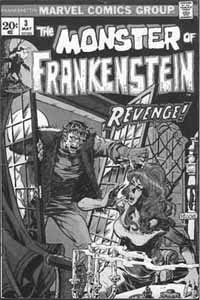

Covers of The Monster of
Frankenstein 3 - 4, by Mike Ploog.
(Click on images to enlarge)
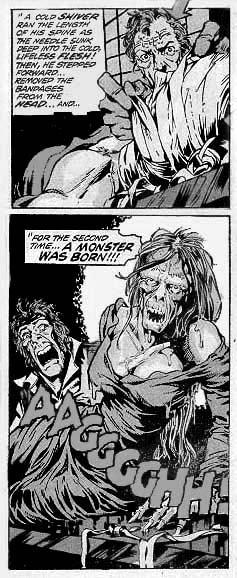
Issue 3: Frankensteins gives life to the Monster's bride (story: Gary Friedrich;
drawings: Mike Ploog)
|
From January 1973 to September 1975 American comic book publisher Marvel ran an 18-issue Frankenstein series entitled
The Frankenstein Monster. Together with Werewolf by Night,
Man-Thing and Tomb of Dracula, The Frankenstein Monster marked a change for Marvel Comics, which in the
1960s had become the leading publisher of comic books. This new line of comics moved away from Marvel's superhero themes and introduced a touch of horror and fantasy to the Marvel Universe, which up to then had only been populated by the likes of Spiderman and the X-Men.
Despite its short run, The Frankenstein Monster (edited by Swamp Thing writer Len Wein) featured several talents, many of whom have
later become well known artists in the field of comics. Issues 1 - 11 were written by Gary Friedrich, no. 12 - 17 by Doug Moench, and the final issue by Bill Mantlo. Pencils and inks were done by John Buscema, John Verpoorten, Bob Brown, Jil Kane and Val Mayerik. Perhaps the best-known of
the artists working on the title
is Mike Ploog, who created the artwork for issues 1 -
6.
Just recently Marvel published a paperback collection of the complete series
entitled Essential Monster of Frankenstein. Unfortunately the reprints are in
black and white only, and real fans will still have to hunt down the original
comic books in order to see the story in full color.
|
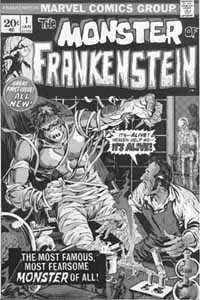
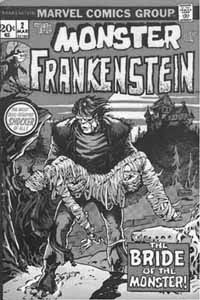
Covers of The Monster of
Frankenstein 1 - 2.
(Click on images to enlarge)
|
The first storyline of The Frankenstein Monster spans over issues 1 - 4 and comprises two
main plots. The story begins in the year 1898. Robert Walton IV, great-great-grandson of Robert Walton, is
on an expedition aboard a ship in the Arctic. He discovers an ice block containing the frozen Frankenstein
Monster. During a mutiny a fire breaks out aboard the ship, the ice block melts and the Monster comes back
to life after a 100-year sleep. On awakening, the Monster saves the ship's cabin boy from perishing in the
flames. Suddenly the ship crashes on an iceberg. It sinks and Walton and the crew, believing the Monster to
have drowned in the sea, try to escape in a lifeboat. But the Monster overturns the boat killing the whole
crew and saves only Walton, the cabin boy and an Eskimo man. He rows them to his former refuge, the wreck of a
stranded ship on an iceberg. In a violent storm the wreck collapses burying its 4 passengers. Once again
the Monster survives and manages to free Walton and the cabin boy from the wreck. Unfortunately, they are
too heavily wounded and they both die. Before he perishes, Walton tells the Monster that there is one last
living descendant of his creator Victor Frankenstein in Ingolstadt, and the Monster sets out on a raft to
find him.
|
This narrative is often interrupted by flashbacks, in which the Monster's origin is revealed. These are told
from different points of view:
by Robert Walton IV, who is reading his great-great-grandfather's journal, by the Monster himself and of course
they are also told in the words of Victor Frankenstein, who in turn had told them to Robert Walton I. In
general, writer Gary Friedrich, stayed surprisingly faithful to Shelley's original
book. Almost everything
from the novel is also used in the comic book: Frankenstein creates the Monster and leaves it in horror;
the Monster kills his brother and sets up the girl Justine; Frankenstein meets the Monster in the eternal
ice of the Swiss Alps, where he tells him about his encounter with the family in the woods and how he learned
to speak; the Monster demands a female mate which is destroyed by Victor; the murder of Frankenstein's fiancée
Elizabeth; and finally, the last confrontation between the Monster and Frankenstein in the Arctic.
Friedrich
focuses on the hate- and revenge-driven relationship between the Monster and its creator by constantly
presenting the antagonists' thoughts and feelings through their narratives. He also portraits the Monster as
a miserable and pitiful creature that only became what it is because of its creator's arrogance.
Of course Friedrich also establishes a couple of changes, e.g. that
Frankenstein tries several times to kill his creation. The most
important change, however, is, that the Monster does not just perish after Frankenstein's death. In issue 4
the Monster tells Robert Walton IV, that he joined a tribe of ape-like men and lived with them until they
were slaughtered by a group of human warriors. After that the Monster falls into the Arctic sea, where he
spends almost 100 years frozen in an ice block.
In many respects, the first 4 issues of The Frankenstein Monster are much better adaptations of Shelley's novel than most Frankenstein movies. Not only do they keep almost all of the story's elements and characters; here we also find an equivalent to the narrative framework established in the original novel, where we are presented with various different viewpoints of the Monster's story.
Issue 3: The Monster kills
Frankenstein's
fiancée Elizabeth (story: Gary Friedrich;
drawings: Mike Ploog)
|
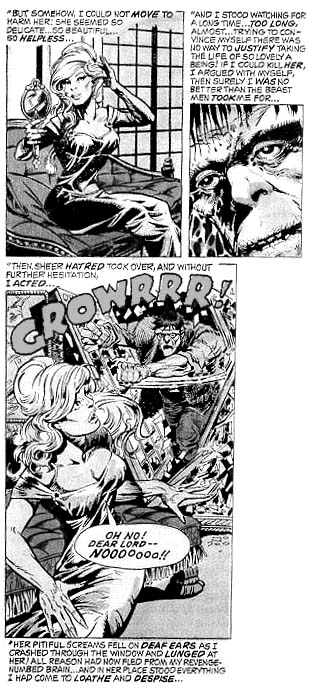
|
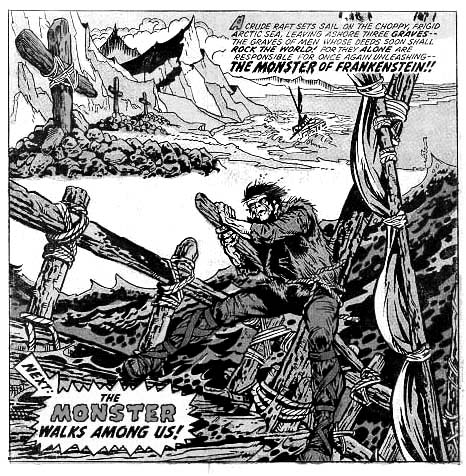
At the end of issue 4 the Monster sets
out to seek its creator's last descendant.
|
The Monster of
Frankenstein 5
(Sep 1973)
This issue works as a transition between 2
storylines. On its quest for the last descendant of Frankenstein the
Monster saves a woman who is about to be burned on a funeral pyre. She
tells him, that the villagers are possessed by a demon in black robes who
tried to make them kill her. The Monster believes her, especially when he and the
woman are attacked by her own father. The creature takes the girl to an
idyllic retreat in the forests, where he lives with her for a couple of
weeks. For the first time the Monster is accepted by a woman.
Unfortunately, this idyll does not last for very long: Suddenly one
morning Lenore, the woman, is gone. So the Monster sets out to find her. He
arrives at her village, where he is attacked by a horrible werewolf. After a
ferocious fight the Monster eventually kills the werewolf, who turns out
to be Lenore, the Monster's great love.
|
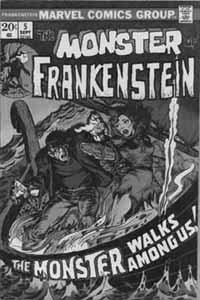
The Monster of Frankenstein 5
(cover by Mike Ploog) |
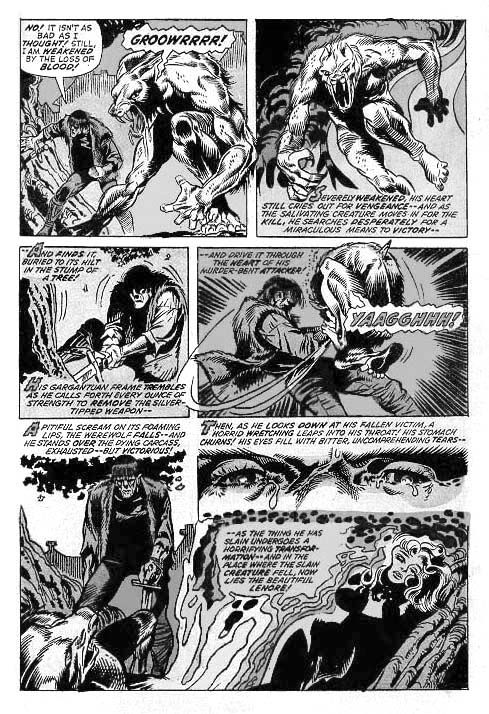
Issue 5: The Monster sheds blood and tears
(story: Gary Friedrich;
drawings: Mike Ploog)

|


